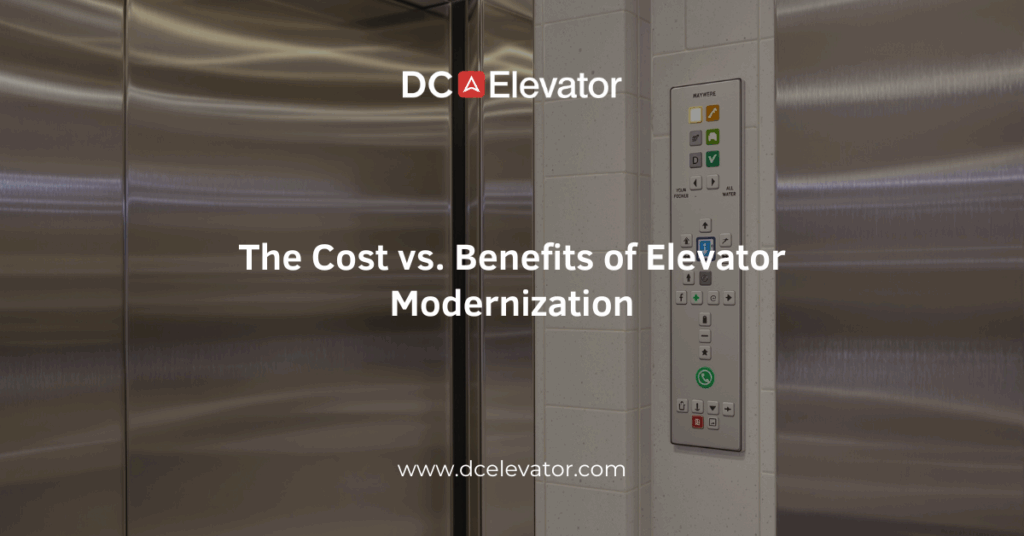Is your elevator more than 20 years old? If so, you’re not alone—many commercial and residential buildings across the U.S. rely on aging elevator systems that may no longer meet today’s standards for performance, safety, or energy efficiency. While modernization can seem like a major expense, it’s often a smarter long-term investment than ongoing repairs. For building owners, property managers, and facility teams, understanding the balance between cost and benefit is crucial when planning capital improvements.
This blog will walk you through the real financial and operational implications of elevator modernization—what it costs, what it saves, and why it’s often the best decision for maintaining tenant satisfaction, safety compliance, and building value.
Why Modernization is More Than Just a Facelift
Outdated Equipment Increases Risk and Costs
Older elevators are more prone to breakdowns, parts failure, and safety code non-compliance. Even if regular maintenance is performed, aging systems typically require more frequent—and expensive—repairs over time. These unscheduled outages can also disrupt business operations or frustrate tenants and visitors, especially in multi-floor buildings with high foot traffic.
Modernization Improves Reliability and Reduces Downtime
By upgrading major components such as controllers, door operators, and drive systems, you improve elevator performance dramatically. Modern systems offer smoother rides, faster operation, and fewer service interruptions. In turn, this translates to fewer emergency calls and less inconvenience for building occupants.
Weighing the Cost: What You’re Really Paying For
The Upfront Investment
Elevator modernization costs can vary significantly depending on the number of elevators, age of the equipment, type of building, and extent of the upgrade. A full modernization may cost anywhere from $100,000 to $300,000 per elevator. While this figure may seem high, it’s important to compare it against the long-term expenses of reactive repairs, energy inefficiency, and potential liability risks.
Energy Efficiency Equals Long-Term Savings
Modern elevator systems are designed to be more energy-efficient. Reduced power usage, LED lighting, and smart standby modes all contribute to lower operating costs. Over time, these savings can significantly offset the upfront modernization expense.
The Hidden Benefits: Tenant Satisfaction and Property Value
Improved User Experience
A newly modernized elevator doesn’t just function better—it feels better. A quieter, smoother ride, faster floor-to-floor travel, and updated aesthetics contribute to a more professional image for your building and a better overall experience for tenants and guests.
Boosting Property Value
Elevator modernization enhances the marketability of your property. Prospective tenants or buyers are more likely to choose a building that reflects ongoing investment in safety and functionality. For commercial properties, this could translate to higher occupancy rates and increased lease value.
When you weigh the long-term benefits against the upfront costs, elevator modernization emerges as a smart investment for most properties. Reduced maintenance expenses, improved safety, enhanced tenant satisfaction, and increased building value all work in your favor. If you’re still managing an aging elevator system and wondering if it’s time for an upgrade, now is the right time to evaluate your options.
If your building’s elevator is showing signs of wear, our experts can assess whether a modernization upgrade is the best solution. Contact us today for an elevator analysis!
